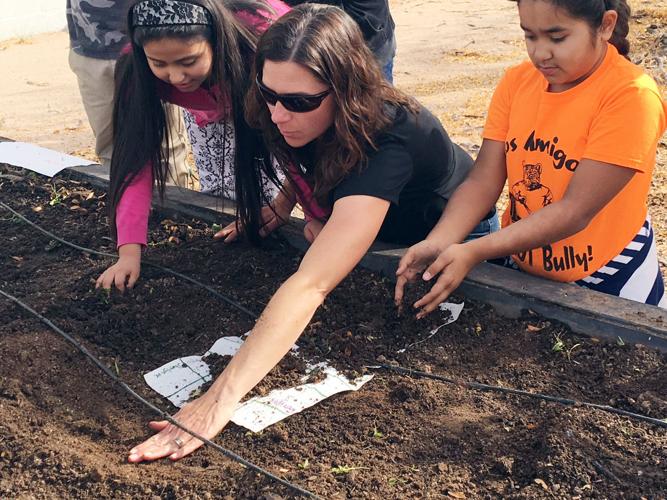Eating healthy is one way to have a good life and lots of energy.
That’s the biggest lesson Andres Soqui, 10, a fifth grader at Los Ninos elementary school learned during his Food Smart Families class — a new program through 4-H that teaches children, grades three through 12, about how to shop and prepare healthy meals on a budget.
The program also connects families with nutrition assistance resources in the community.
Food Smart Families started in Arizona in July, as an extension of the 4-H’s existing program, Healthy Living Ambassadors, which recruits teens and trains them on the subjects of nutrition, food budgeting and preparation. After training, the 4-H finds opportunities for the teens to take what they learned into their communities, such as assisting with the Food Smart Families program.
“The new piece is that it’s reaching the kids and we’re also reaching the families,” said Natalie Shepp, program coordinator. “I think that was kinda missing before. We needed to reach the families because they’re the ones making decisions on food being purchased and prepared.”
Shepp aims to take the program to schools where at least 50 percent of students are on the free and reduced lunch program. The goal of Food Smart Families — which is funded by a grant from United Health Care — is to utilize the teen ambassadors and to reach 1,600 kids for 10 hours of education over the course of the two-year grant.
It can be offered to school groups, church groups or any other underserved youth groups with 20 or more kids ages eight to 18, Shepp said.
To keep students’ interest, lessons are engaging, hands-on and always include a food sample.
“I always give handouts to bring home to families and they always go away with recipes from what we did that day,” Shepp said.
On a recent afternoon, Shepp handed out a flier — which students got to take home — telling families how to get $40 of produce for $20 using SNAP benefits at the community food bank’s farmers markets.
“Part of my job is to teach you how to get those fruits and veggies cheaper,” Shepp said to the students.
After going over ways to eat healthy on the cheap — bringing leftovers for lunch, meal planning and using coupons — students were given grocery ads and instructed to select groceries for a full day of healthy meals and add up how much it costs.
In the garden that day, students planted seeds that they had glued to paper towels in the prior week’s class, which doubled as a math lesson, since they learned about equal spacing.
“The paper towels help the plants because it decomposes into the dirt,” said Giovani Picazo, 10.
The food sampling is a big hit with the kids — even when it comes to the green stuff, like kale.
“It’s surprising that I can always bring something healthy and they love it, and they’ll come back and say ‘I made that smoothie at home,’” Shepp said. “I feel it’s really working and it’s helpful.”
The “Rainbow Smoothie,” made with fruits and veggies of every color, was a success on that December afternoon.
As Brittany Schultz, 21, an Americorp volunteer assisting Shepp, finished blending, students lined up to get a sample.
“It’s good. I taste blueberries and strawberries,” said Anahi Solano, 11.
“The only thing I taste is banana and spinach,” said another.
Most kids lined up for seconds and took a copy of the recipe to make at home.
Solano says her family already eats pretty healthy, but her parents will buy ingredients to make some of the recipes she’s gotten from the program when they have time.
At the end of the 10 hours of lessons, which are taught over the course of a few weeks, the students plan a parent event, where they get to teach their parents what they’ve learned. At the event, families receive recipes for two healthy meals and the ingredients to make them for free.
“The best example is the one I did with Academy Adventures in the Flowing Wells area,” Shepp recalled. “We did a scavenger hunt. They went through the store (Food City) with a piece of paper trying to compare prices on different ingredients. It was so fun. I was beaming the whole time...When they can walk away with free food, I think it motivates them. The parents were actually doing it (scavenger hunt) with their kids.”
The program seems to be having an impact on the students, says Ann Linares, intervention assistant at Los Amigos elementary school.
“A lot of times, they don’t know what a healthy meal is,” Linares said. “This I think will help them make a better choice on what to eat. It can leave an impact since they’re going home with materials to show their parents and I think the parents will start to get it if the kids are saying ‘No, I prefer fruit.’ I’ve even had kids coming to me saying ‘Miss, I had a healthy lunch today.’”








